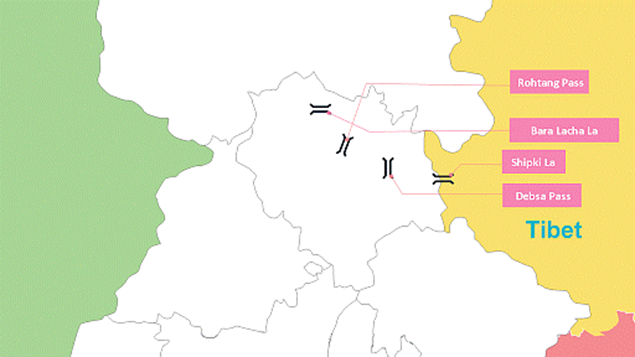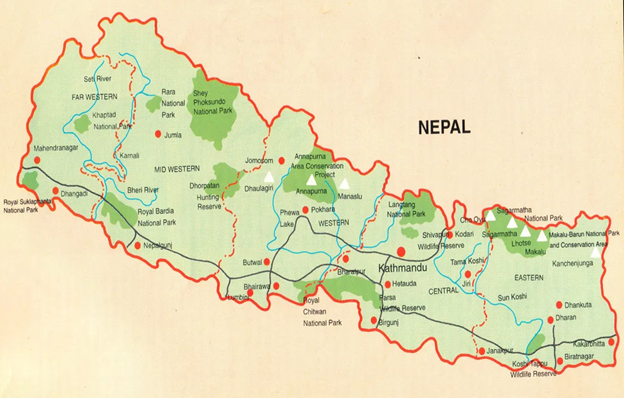Why in the News?
- China has agreed in principle to resume border trade through Shipki-La in Kinnaur district, Himachal Pradesh, which was suspended in 2020 due to the COVID-19 pandemic.
- The decision was taken during the visit of the Chinese Foreign Minister to India after discussions with the External Affairs Minister.
- Talks are also underway to allow the Kailash Mansarovar Yatra through Shipki-La, making it an additional pilgrimage route besides Lipulekh and Nathu La.
About Shipki-La

- Location: Shipki-La is a mountain pass on the India-China border in the Kinnaur district of Himachal Pradesh.
- Altitude: It lies at an elevation of about 4,720 meters (15,490 ft) above sea level in the Himalayas.
- Connectivity: It connects Himachal Pradesh in India with Tibet (China) and is one of the three approved Indo-China trade routes.
- Historic Trade Route: Shipki-La was part of the ancient Indo-Tibetan trade route facilitating exchange of goods like wool, salt, and grains.
- Border Trade Point: It is one of the designated border trade points between India and China, along with Lipulekh (Uttarakhand) and Nathu La (Sikkim).
- Rivers: The Sutlej River enters India from Tibet near Shipki-La, making it a significant geographical point.
- Strategic Importance: It holds strategic importance for defense, trade, and connectivity between the two nations.
- Challenges: Located in a high-altitude, snow-bound region with harsh weather and limited infrastructure, making year-round trade difficult.
Nepal
Why in the news?

- Nepal has officially joined the International Big Cat Alliance (IBCA) by signing the Framework Agreement in August 2025.
- This move aims to strengthen global cooperation for conservation of big cats, especially species present in Nepal like snow leopard, tiger, and common leopard.
- The IBCA, launched by India in 2023, is a global initiative for the conservation of seven big cat species.
About Nepal
- Location: Nepal is a landlocked country in South Asia, bordered by China (north) and India (south, east, west).
- Capital: Kathmandu is the capital and largest city.
- Geography: Home to Mount Everest (8,848.86 m), the world’s highest peak, located in the Himalayas.
- Major Rivers: Koshi, Gandaki, and Karnali are important river systems.
- Climate: Ranges from tropical in the south to alpine in the north.
- Religion & Culture: Predominantly Hindu, with significant Buddhist population; known for heritage sites like Pashupatinath Temple and Lumbini (birthplace of Buddha).
- Economy: Mainly agriculture-based, with growing tourism and hydropower
- Biodiversity: Rich in flora and fauna; hosts species like snow leopard, red panda, and Bengal tiger, making it important for wildlife conservation.





